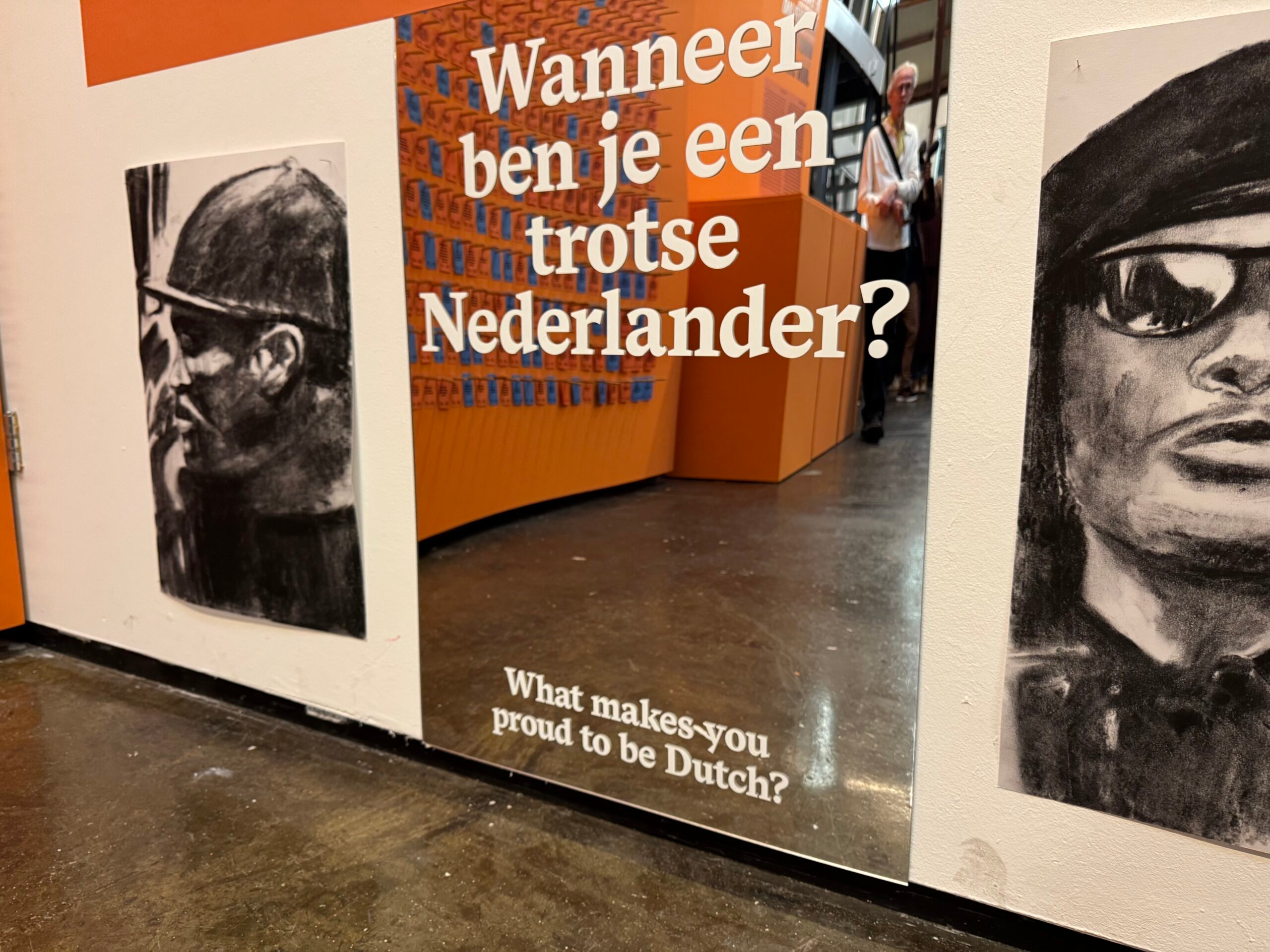Netherlands, get better! New show on 15 years of black activism

Fourteen years after a demonstrator was arrested for wearing a T-shirt saying “Black Pete is racism”, the Netherlands is a different place.
This is the message of a new exhibition, “ The Netherlands, get better !”, running until February 2026 at the NDSM-werf in Amsterdam Noord. But at an opening on Saturday, activists and curators stressed that while one protest movement has run its course, the country can still do better.
Jerry Afriyie, former chairman of the Kick Out Zwarte Piet protest group – founded to oppose blackface at the Dutch children's festival of Sinterklaas – said its controversial protests had been necessary.
“I listen to people, and I have heard hundreds of stories,” he said. “And what all of these hundreds of people who talk to me on the street or in the train have in common is that they always hoped their great-grandchildren would not be subjected to Black Pete racism…and it is surreal for them now to experience an inclusive Sinterklaas.”
Last year, the campaign group founded in 2011 said it would stop demonstrating at parades across the country in the run-up to December 5. In recent years, its non-violent protests against Sinterklaas helpers wearing blackface and curly wigs faced attacks and violent counter-protests . It claimed 28 municipalities had agreed to “move to an inclusive Sinterklaas parade”.
Afriyie said the controversy around modernizing what was seen by many Dutch people as a harmless tradition was predictable.
“Other countries are not much more forgiving if you challenge their traditions and norms,” he said. “Some people will never appreciate it, but if you push through all of the unpleasantness, the slander, the accusations of terrorism and the violence, we can achieve something this country never thought possible. And in the eyes [of older generations], I see the answer to the question of whether the Netherlands has got better.”
Glenda Havertong, a black actress who wrote a sketch about how ethnic minorities were bullied by being called “Black Pete” on Sesame Street in 1987, opened the exhibition.
She was inspired at the time, she said, by her five-year-old daughter's experiences at school. “I knew that I wouldn't just affect that school, but that I would also affect the Netherlands – and I did it because it is a festival for our children,” she said. “And sure enough [most] children today don't know anything about Black Piets – they just celebrate Sinterklaas.”
But she said the sketch caused tension with some actors and crew – and inspired a whole year of angry letters. That year, she toured the country with an award-winning book tour, also raising awareness.
“We shouldn't be in a hurry, because you can't rush,” she said. “I traveled far and wide to tell the story about colonialism and how Sinterklaas is an extension of it, to present it in a different way…Things you grew up with, you don't just abandon. But it important that we are visible on a journey.”
The exhibition, presented by Amsterdam Museum, tells the story of 15 years of activism on the way to a national apology for slavery from Dutch king Willem-Alexander and former prime minister Mark Rutte .
It includes historical information on the Black Pete tradition – mirroring “19 th century colonial caricatures of Black people” – protest t-shirts in which artist Quinsy Gario and Afriyie were arrested and a “black manifesto” against present-day institutional and societal racism .
It includes a “lesson pack on empathy” created for schools and a series of mirrors asking questions like: “What makes you proud to be Dutch?”
While the show presents the activist movement's successes, not all municipalities have modified the appearance of Piet to have a sooty face rather than blackface, and especially rural and traditionalist areas oppose any change in 2025.
Imara Limon, chief curator at Amsterdam Museum, said it was above all important to tell various stories in museums and institutions.
“I was educated in the 'white', Western history of art, but always had a feeling that there was something missing,” she said. “There are a lot of things that we need to look full in the face…and we can never do enough.”
We could not provide the Dutch News service, and keep it free of charge, without the generous support of our readers. Your donations allow us to report on issues you tell us matter, and provide you with a summary of the most important Dutch news each day.
Make a donationdutchnews




